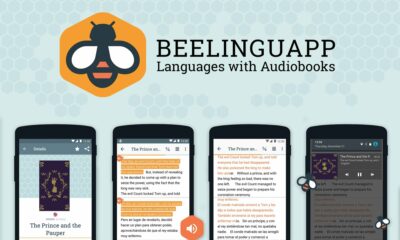NEWS
Changes to Infrastructure May Trigger Indexing Drop via @sejournal, @martinibuster
Google’s John Mueller answered a question about declining crawl rates after making large changes to the websites infrastructure, in this case, moving to a new content delivery network (CDN).
Mueller explains why indexing may appear to slow down after these kinds of changes.
The person asking the question noted that they created redirects for URLs and moved to a new Content Delivery Network (CDN) and soon after began experiencing notable drops in indexing rates.
Background on Website Indexing by Google
Indexing is a reference to the process of Google’s web crawler, Googlebot, visiting a web page and downloading it to Google’s search index.
Advertisement
Continue Reading Below
Google’s search index is where candidate pages eligible to be ranked exist. Search results come from Google’s search index.
That is the reason why indexing rate by Google is so important. Google needs to crawl and discover new pages to rank.
It is considered a major problem if something causes Google to not crawl a web page.
According to Google’s help page on crawling and indexing:
“We use software known as web crawlers to discover publicly available webpages. Crawlers look at webpages and follow links on those pages, much like you would if you were browsing content on the web.
They go from link to link and bring data about those webpages back to Google’s servers.
…We take note of key signals — from keywords to website freshness — and we keep track of it all in the Search index.”
Advertisement
Continue Reading Below
Changing Content Delivery Network is a Major Change
A content delivery network is a network of servers positioned all around the world. The purpose is to speed up the delivery of website content by serving the content from a server that is close to the person trying to visit the web page.
So in theory Google should be able to visit the site and index it even faster, which is the reasonable expectation.
This is the question asked:
“After redirecting and changing and CDN we’re seeing a drastic drop in crawl rate.”
John Mueller Explains Severe Drops in Crawling
 Google’s John Mueller answered:
Google’s John Mueller answered:

“Yes! That’s every reasonable.
If you change your website’s infrastructure then we will change our crawling.
On the one hand, first, to be a little bit conservative and make sure we don’t cause problems and then later on we automatically ramp up again.
So if you change to a different CDN that’s a significant change in the infrastructure and we recognize that change and we hold off crawling for a while and then we ramp up again if we think everything is fast.”
Google is Avoiding Being Disruptive
The whole point of a “drastic drop” in indexing when major infrastructure changes are made is to make it easy on the updated site.
Sometimes a site that is rolling out a major change can have multiple changes over the course of a week or longer.
Indexing a site that might not be completely updated or ready to be indexed can result in confusion at Google if the site is in a state of constant change.
So it’s actually a good thing that Google slows down its crawling after a major infrastructure change to the website.
Advertisement
Continue Reading Below
Citation
Watch Mueller answer question at the 29:10 minute mark
[embedded content]NEWS
OpenAI Introduces Fine-Tuning for GPT-4 and Enabling Customized AI Models

OpenAI has today announced the release of fine-tuning capabilities for its flagship GPT-4 large language model, marking a significant milestone in the AI landscape. This new functionality empowers developers to create tailored versions of GPT-4 to suit specialized use cases, enhancing the model’s utility across various industries.
Fine-tuning has long been a desired feature for developers who require more control over AI behavior, and with this update, OpenAI delivers on that demand. The ability to fine-tune GPT-4 allows businesses and developers to refine the model’s responses to better align with specific requirements, whether for customer service, content generation, technical support, or other unique applications.
Why Fine-Tuning Matters
GPT-4 is a very flexible model that can handle many different tasks. However, some businesses and developers need more specialized AI that matches their specific language, style, and needs. Fine-tuning helps with this by letting them adjust GPT-4 using custom data. For example, companies can train a fine-tuned model to keep a consistent brand tone or focus on industry-specific language.
Fine-tuning also offers improvements in areas like response accuracy and context comprehension. For use cases where nuanced understanding or specialized knowledge is crucial, this can be a game-changer. Models can be taught to better grasp intricate details, improving their effectiveness in sectors such as legal analysis, medical advice, or technical writing.
Key Features of GPT-4 Fine-Tuning
The fine-tuning process leverages OpenAI’s established tools, but now it is optimized for GPT-4’s advanced architecture. Notable features include:
- Enhanced Customization: Developers can precisely influence the model’s behavior and knowledge base.
- Consistency in Output: Fine-tuned models can be made to maintain consistent formatting, tone, or responses, essential for professional applications.
- Higher Efficiency: Compared to training models from scratch, fine-tuning GPT-4 allows organizations to deploy sophisticated AI with reduced time and computational cost.
Additionally, OpenAI has emphasized ease of use with this feature. The fine-tuning workflow is designed to be accessible even to teams with limited AI experience, reducing barriers to customization. For more advanced users, OpenAI provides granular control options to achieve highly specialized outputs.
Implications for the Future
The launch of fine-tuning capabilities for GPT-4 signals a broader shift toward more user-centric AI development. As businesses increasingly adopt AI, the demand for models that can cater to specific business needs, without compromising on performance, will continue to grow. OpenAI’s move positions GPT-4 as a flexible and adaptable tool that can be refined to deliver optimal value in any given scenario.
By offering fine-tuning, OpenAI not only enhances GPT-4’s appeal but also reinforces the model’s role as a leading AI solution across diverse sectors. From startups seeking to automate niche tasks to large enterprises looking to scale intelligent systems, GPT-4’s fine-tuning capability provides a powerful resource for driving innovation.
OpenAI announced that fine-tuning GPT-4o will cost $25 for every million tokens used during training. After the model is set up, it will cost $3.75 per million input tokens and $15 per million output tokens. To help developers get started, OpenAI is offering 1 million free training tokens per day for GPT-4o and 2 million free tokens per day for GPT-4o mini until September 23. This makes it easier for developers to try out the fine-tuning service.
As AI continues to evolve, OpenAI’s focus on customization and adaptability with GPT-4 represents a critical step in making advanced AI accessible, scalable, and more aligned with real-world applications. This new capability is expected to accelerate the adoption of AI across industries, creating a new wave of AI-driven solutions tailored to specific challenges and opportunities.
This Week in Search News: Simple and Easy-to-Read Update

Here’s what happened in the world of Google and search engines this week:
1. Google’s June 2024 Spam Update
Google finished rolling out its June 2024 spam update over a period of seven days. This update aims to reduce spammy content in search results.
2. Changes to Google Search Interface
Google has removed the continuous scroll feature for search results. Instead, it’s back to the old system of pages.
3. New Features and Tests
- Link Cards: Google is testing link cards at the top of AI-generated overviews.
- Health Overviews: There are more AI-generated health overviews showing up in search results.
- Local Panels: Google is testing AI overviews in local information panels.
4. Search Rankings and Quality
- Improving Rankings: Google said it can improve its search ranking system but will only do so on a large scale.
- Measuring Quality: Google’s Elizabeth Tucker shared how they measure search quality.
5. Advice for Content Creators
- Brand Names in Reviews: Google advises not to avoid mentioning brand names in review content.
- Fixing 404 Pages: Google explained when it’s important to fix 404 error pages.
6. New Search Features in Google Chrome
Google Chrome for mobile devices has added several new search features to enhance user experience.
7. New Tests and Features in Google Search
- Credit Card Widget: Google is testing a new widget for credit card information in search results.
- Sliding Search Results: When making a new search query, the results might slide to the right.
8. Bing’s New Feature
Bing is now using AI to write “People Also Ask” questions in search results.
9. Local Search Ranking Factors
Menu items and popular times might be factors that influence local search rankings on Google.
10. Google Ads Updates
- Query Matching and Brand Controls: Google Ads updated its query matching and brand controls, and advertisers are happy with these changes.
- Lead Credits: Google will automate lead credits for Local Service Ads. Google says this is a good change, but some advertisers are worried.
- tROAS Insights Box: Google Ads is testing a new insights box for tROAS (Target Return on Ad Spend) in Performance Max and Standard Shopping campaigns.
- WordPress Tag Code: There is a new conversion code for Google Ads on WordPress sites.
These updates highlight how Google and other search engines are continuously evolving to improve user experience and provide better advertising tools.
Facebook Faces Yet Another Outage: Platform Encounters Technical Issues Again

Uppdated: It seems that today’s issues with Facebook haven’t affected as many users as the last time. A smaller group of people appears to be impacted this time around, which is a relief compared to the larger incident before. Nevertheless, it’s still frustrating for those affected, and hopefully, the issues will be resolved soon by the Facebook team.
Facebook had another problem today (March 20, 2024). According to Downdetector, a website that shows when other websites are not working, many people had trouble using Facebook.
This isn’t the first time Facebook has had issues. Just a little while ago, there was another problem that stopped people from using the site. Today, when people tried to use Facebook, it didn’t work like it should. People couldn’t see their friends’ posts, and sometimes the website wouldn’t even load.
Downdetector, which watches out for problems on websites, showed that lots of people were having trouble with Facebook. People from all over the world said they couldn’t use the site, and they were not happy about it.
When websites like Facebook have problems, it affects a lot of people. It’s not just about not being able to see posts or chat with friends. It can also impact businesses that use Facebook to reach customers.
Since Facebook owns Messenger and Instagram, the problems with Facebook also meant that people had trouble using these apps. It made the situation even more frustrating for many users, who rely on these apps to stay connected with others.
During this recent problem, one thing is obvious: the internet is always changing, and even big websites like Facebook can have problems. While people wait for Facebook to fix the issue, it shows us how easily things online can go wrong. It’s a good reminder that we should have backup plans for staying connected online, just in case something like this happens again.
-

 WORDPRESS3 days ago
WORDPRESS3 days agoWordPress biz Automattic details WP Engine deal demands • The Register
-
SEARCHENGINES5 days ago
Daily Search Forum Recap: September 30, 2024
-

 SEARCHENGINES7 days ago
SEARCHENGINES7 days agoGoogle Volatility With Gains & Losses, Updated Web Spam Policies, Cache Gone & More Search News
-

 SEO7 days ago
SEO7 days ago6 Things You Can Do to Compete With Big Sites
-
SEARCHENGINES4 days ago
Daily Search Forum Recap: October 1, 2024
-

 SEO6 days ago
SEO6 days agoAn In-Depth Guide For Businesses
-

 AFFILIATE MARKETING6 days ago
AFFILIATE MARKETING6 days agoThis Minimalist Lamp Lets You Pick From 16 Million+ Lighting Colors for Maximum Productivity
-

 AFFILIATE MARKETING6 days ago
AFFILIATE MARKETING6 days agoNvidia CEO Jensen Huang Praises Nuclear Energy to Power AI














